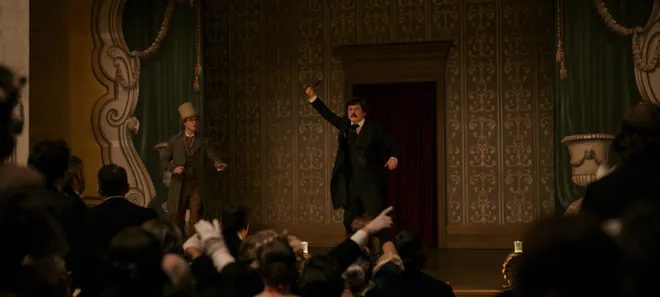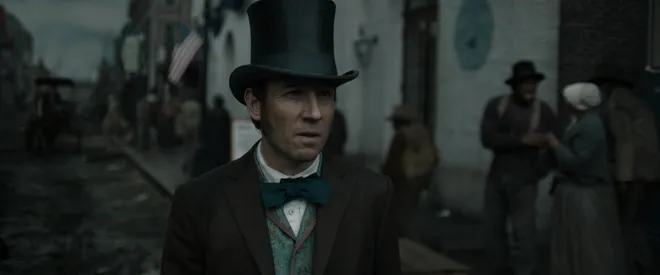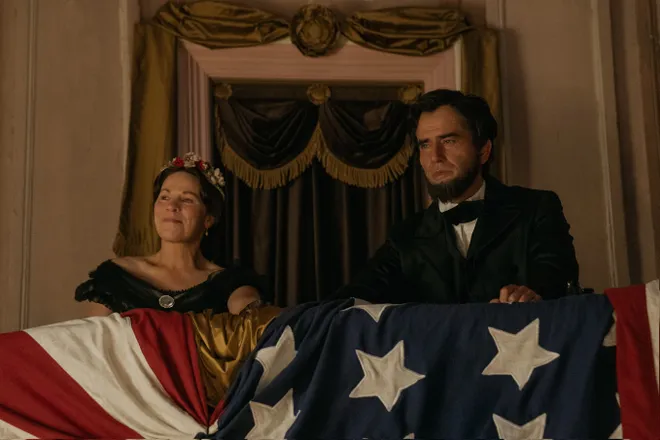'Manhunt' review: You need to watch this wild TV series about Lincoln's assassination
This isn't your average history lesson.
By the time your seventh grade social studies teacher got to Abraham Lincoln's assassination at the end of your long unit on the American Civil War, you may have fallen asleep. You probably committed the name "John Wilkes Booth" to memory so that you could pass your test. Then you moved on to Reconstruction. Great. Done. The bell rings.
But there's more to the story. Of course, there is. And it's a big and thrilling story, enough to make an excellent TV miniseries. Apple TV+'s "Manhunt" (streaming Fridays, ★★★½ out of four), based on the 2006 nonfiction book by James L. Swanson, is the story of Lincoln's assassination and its aftermath: the 12-day manhunt for Booth after he fled the scene of the crime. But it's also a bigger story, one about the country as a whole, with deep insights into how we got to where we are today. Sometimes somber (and even depressing), rollicking and surprisingly funny at others, "Manhunt" manages to give our history the same prestige treatment Hollywood often accords British kings and queens in their bejeweled gowns and crowns. Lincoln may have worn a black suit and hat, but his drama is just as juicy, and probably a lot more important on this side of the pond.

"Manhunt" begins with the story we all know: Still glowing from his victory in the Civil War, President Abraham Lincoln (Hamish Linklater) and his wife Mary Todd Lincoln (Lili Taylor) take in a play at Ford's Theatre in Washington. In their private box, Lincoln is shot in the back of the head by John Wilkes Booth (Anthony Boyle), a Confederate sympathizer and middling stage actor from a famous family. Booth escapes, and for the next 12 days, he is pursued by Secretary of War Edwin Stanton (Tobias Menzies) and the Union army until − spoiler alert for American history! − he is killed by a soldier in a Virginia barn. "Manhunt" weaves in flashbacks from when Lincoln was still alive and ends with the trial of Booth's conspirators. The trial is a bit of a quiet ending compared to the rest of the series, but given that it's based on real events, the writers were stuck with how the story really ended.

The cast also includes a hilarious Patton Oswalt as Lafayette Baker, a morally loose investigator on the Booth case; Matt Walsh as Dr. Samuel Mudd, who treated Booth's broken leg after he jumped to the stage from Lincoln's box; and Lovie Simone as Mary Simms, Mudd's former slave, who testifies against him at his trial.
The series' guiding light is Menzies' Stanton, a clear-eyed, full-hearted patriot whose loyalty to Lincoln and progressive ideas guides his hunt for Booth and his battles with newly sworn-in President Andrew Johnson (Glenn Morshower), who attempts to roll back Lincoln's Reconstruction policies. Menzies is a journeyman performer who's had his fair share of supporting roles, but this time brings his understated style to center stage.

Menzies is a great foil to Boyle's bombastic Booth. Unlike Steven Spielberg's laudable but deathly serious 2012 biopic "Lincoln" (mostly remembered for Daniel Day Lewis's transformative performance as the 16th president), "Manhunt" has an appropriate sense of humor. Booth is a tragicomic figure, babbling about fame and glory while limping through the muddy Maryland backcountry. He committed a serious crime that had serious consequences for the country, but he wasn't a serious person, and Boyle crafts a foolish and odious character. The actor was most recently seen as an American hero in Apple TV+'s World War II epic "Masters of the Air," but he's pretty good at playing the villain, too.
After a long journey to the screen, "Manhunt" was adapted by Monica Beletsky ("Fargo"), and her version of the story leans into the absurdity of Booth's unlikely escape and the thrills of the hunt for him, but never loses the weighty plot. The series illuminates details left out of other standard Civil War stories, and it will have you looking up the real history on Wikipedia. A special emphasis on the Wall Street tycoons who supported the Confederacy (and became rich from the slave trade) illustrates parallels with modern-day politics. Good art tells a story you can't stop thinking about, but great art tells a story that makes you think about real life.
So don't judge a book by its historical cover. And don't judge the series by the stovepipe hats and hoop skirts on your screen. They're more fun than they seem.
Disclaimer: The copyright of this article belongs to the original author. Reposting this article is solely for the purpose of information dissemination and does not constitute any investment advice. If there is any infringement, please contact us immediately. We will make corrections or deletions as necessary. Thank you.







